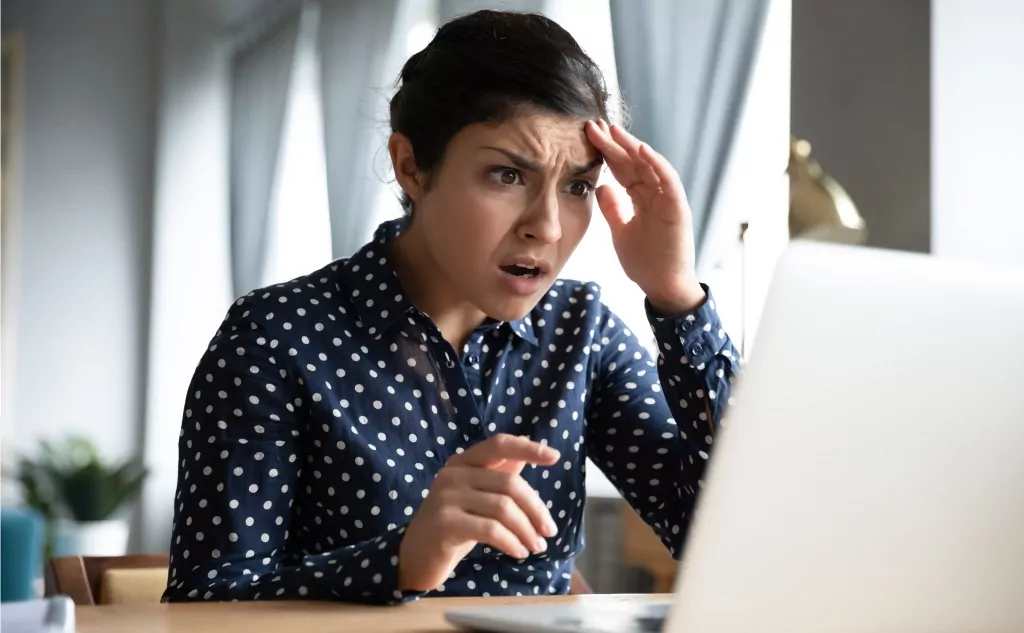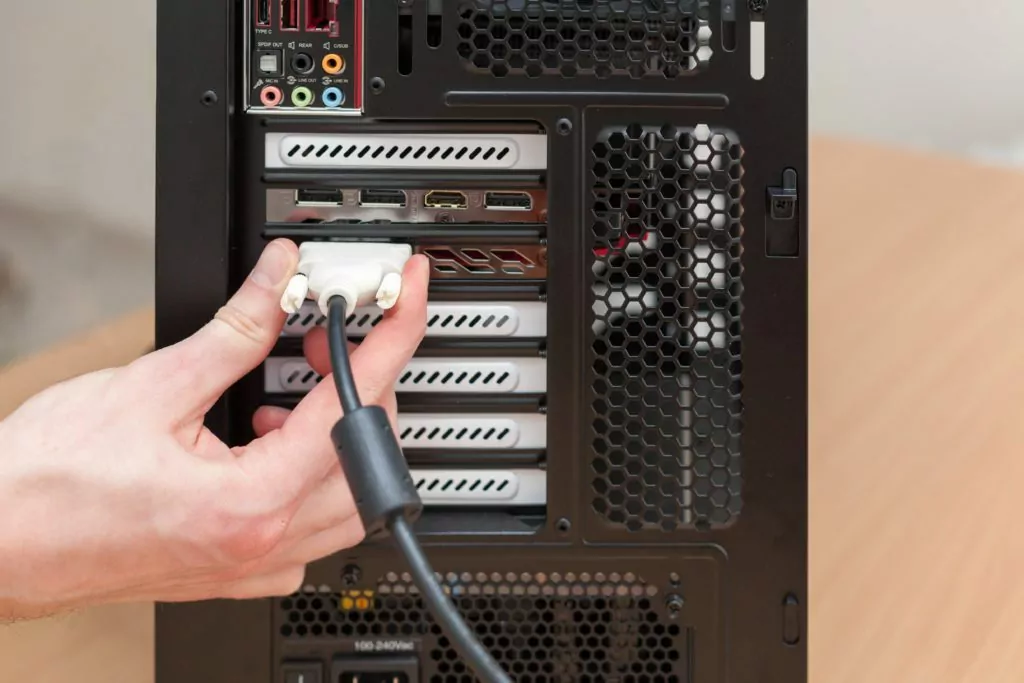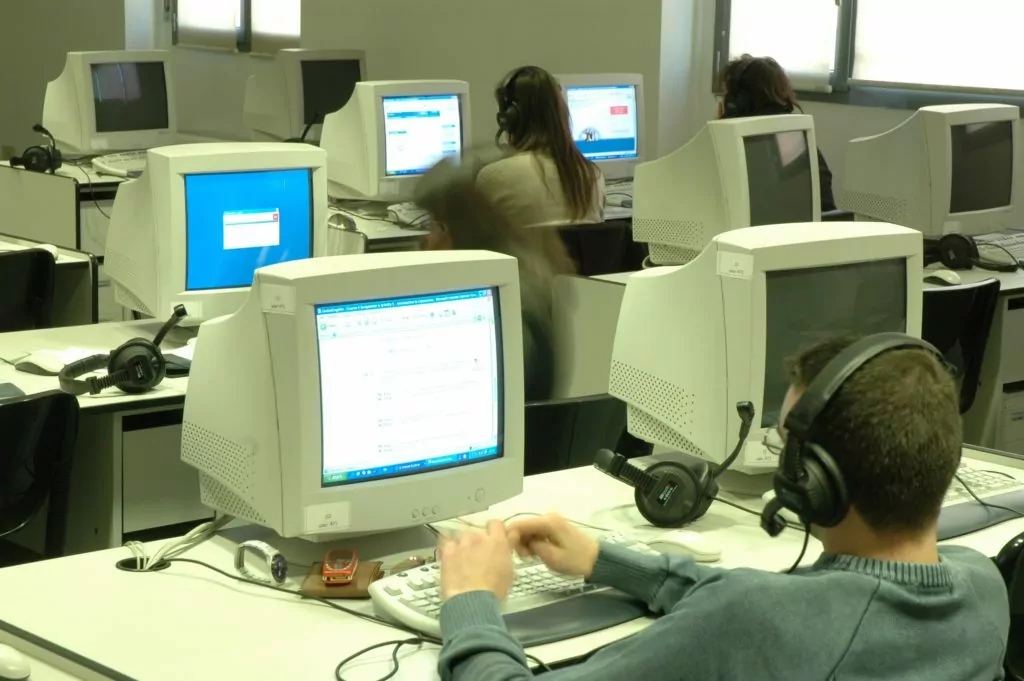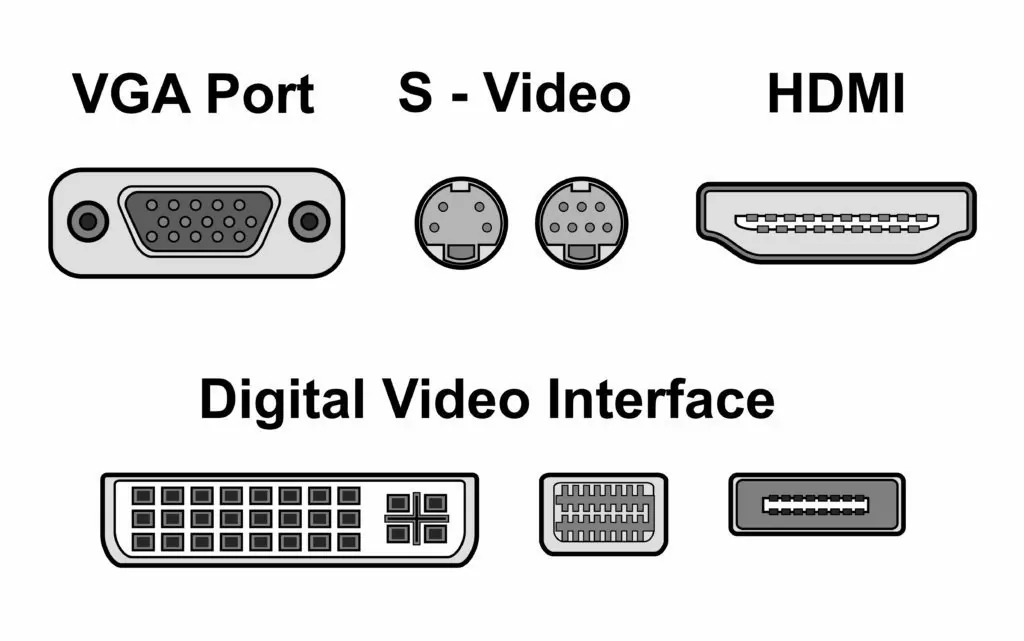Here’s how to fix your computer screen when it turns green.
From a loose cable to hardware failure.
So if you want to learn all about why your screen turned green and how to fix it, then this article is for you.
Let’s get started!

How to Fix Common Computer Screen Problems?
Technology is something that makes life better and much easier. We have cars that we drive to work. We have air conditioning that makes hot summer days bearable. And we have our laptops and PCs that we use for communication, work, and play.
So when does old hardware actually become old hardware?
Well, it becomes old hardware when it can no longer meet our needs. When a new game gets released, but our PC can’t support it, or when something gets broken or malfunctions.
The fact is that we most often get rid of hardware when there are simple problems, such as the green monitor screen, that actually can be fixed easily.
Why do we throw hardware away then? Because we think that it’s broken beyond repair.
This happens especially with monitors when a green screen appears. So we panic and try to figure out what’s wrong and, in the end, we get rid of it.
It’s a typical situation. That’s why we need to know more about monitors and how this situation can be resolved.
Common Computer Screen Problems and Fixes?
Everyone experiences problems with electrical equipment, from our toasters to our computer monitors or laptop screens.
Seriously, sometimes we have a faulty screen on our smartphone, and we immediately react: restart, search for solutions, and so forth.

The most common problem is the connection between the graphic card and the output device, that is, the screen.
Nevertheless, other problems can occur.
#1 Stuck Pixels
When you see something like a dot, square, or an irregular shape that doesn’t move on the screen while everything else does, it’s a stuck pixel. This means that the pixel is dead, it doesn’t work, the screen is physically damaged.
This can happen if you hit the screen somehow or if you accidentally spill any liquid on it. There are many reasons. In this case, you need to look at your warranty and see if it’s covered.
#2 Flickering, Flashing, Shuttering
There are multiple reasons why this might be happening. The first and almost always correct one is a loose cable, or even damaged cables.
You need to unplug and plug to see if there’s any damage to the cable connecting the monitor and the graphic card. It’s good to try the monitor on another PC, if possible because maybe something’s wrong with the graphic card.
However, it would be best to change the cable first and retry turning on the monitor and connecting it to the PC.
If it’s still flickering, right-click on your desktop and click on Display settings > Advanced Display Settings. Next, go to the section that says Refresh Rate and select 59 or 60 Hertz. This should get rid of the flickering.
#3 Solid Green Screen
Now and then, a solid green screen can appear on your monitor, and you feel stunned. You think that it’s a huge problem and that there’s no way you can fix it, and you have no possible solution.
There are several possible reasons why a solid green screen appears. The most common one is that the connector is loose. You can fix it by fixing a couple of screws to the port, as is possible with almost all PCs.

Or, there’s a problem with the video card. The graphic card is damaged, or the driver is outdated. You can update the driver by going to the Search box next to the Start menu and typing Device Manager.
When you click on it, a window labeled Device Manager appears. You can find the section Display Adapters. When you locate it, you need to expand it by clicking on the arrow on the left side.
Then, you right-click on the adapter and click on Update Driver. That should automatically update your driver. That might fix the problem.
#4 Black Screen
When you turn on your device and find a black screen and nothing happens for some time, there’s either a loose cable or the graphic card might be damaged.
There are a few things you can try to make the monitor work again because there’s a chance that it’s just not receiving signals.
You can blow into the port to remove dust and other stuff. This actually might work because dust can disrupt signals.
You can simply unplug and plug the cable back in. It’s also good to try a different monitor. If there’s still a black screen, then you need to look into the graphic card.
#5 Green Screen While Watching Videos
There have certainly been many cases when you try to stream videos online through Netflix or YouTube. You get the green screen problem in the video. Now, it’s a nag, and you don’t want to see that when you’re excited about the video.
You can do several things that generally help with most problems, not only with green screen videos.
First and simplest, restart your computer. This often solves most kinds of trouble you might have, so it just might work with the green screen video issue. Also, this is maybe the quickest possible fix.
You can always try to close everything else, like tabs and other running apps. This might help with the issue as well.
Of course, you can update the browser, delete the cached data, temporary files, and cookies. This fix might be good for other things as well. If something’s not working correctly in your browser, you might solve the issue with this fix.
#6 Troubleshooting Devices
It’s always good to troubleshoot. With the new and improved troubleshooter, most of the problems get resolved immediately. This may also fix the green screen problem.
So, to troubleshoot the system, open Settings > Update & Security > Troubleshoot > Hardware and Devices > Run the troubleshooter.
When the troubleshooter finishes, you can try watching a video to see if the green screen problem is gone.
#7 Disable Hardware Acceleration
Sometimes your devices use your GPU (Graphics Processing Unit) to render high-intensity graphic programs. So, the CPU (Central Processing Unit) is spared. However, the CPU and GPU both do their part in rendering the program.
That’s why there are issues like green screen problems or sometimes even a blank screen when you try to watch videos on YouTube or other similar platforms.

To fix this problem, you need to disable Hardware Acceleration. You do this by right-clicking on the video itself. Then, if there’s a Settings option, you select it from the menu and uncheck Enable hardware acceleration.
After that, you need to restart the browser, and everything should work perfectly. If there’s no Settings option, then you need to enter the browser settings.
For Internet Explorer, you need to open Settings on your computer. Then, click on Internet Options > Advanced. The first section should be Accelerated graphics. Check Use software rendering instead of GPU rendering.
Click on Apply and Ok, and there you go. Finally, the green screen problem might be gone.
For Google Chrome, you need to click on the three dots in the upper right corner. Then go to Settings > Advanced > System. Uncheck. Use hardware acceleration when available. Restart Chrome, and everything should work properly.
Mozilla Firefox is more or less the same. Click on the three horizontal lines, then on Options > General > Performance. Once there, uncheck Use recommended performance settings and Use hardware acceleration when available.
Once you restart the browser, you should be able to watch the video without any interruptions or possible glitches.
How Do Monitors Work?
Computer monitors are output devices that provide information for us in visual form in real-time.
Everything that the computer processes can appear on the monitor in ways we can understand it, through writing, images, or code.
However, technically, we can’t see the background processes. That is how the computer is processing the data unless we look into its programming and so forth.
Even so, the monitor shows us the data we created, such as in a word processor, or we ordered to be processed, such as imputing computational data to get a mathematical result.
So, when you click a couple of times on an icon, the processed data appears in visual form. It’s either a window, or the whole screen displays something.
The original purpose of monitors is to provide a visual means to process data, program the computer by imputing code, or see the data processing results.
But, we also use monitors for entertainment. We still use them for work, but it’s much more common to see people streaming movies or TV shows and playing video games.
CRT Monitors
Cathode–ray tube (CRT) monitors were quite huge. You remember those old monitors that weighed a ton. They use the same technology as old TVs. That’s why they were so heavy.
Basically, this kind of monitor had a vacuum tube inside. That’s why it’s so bulky. The tube has a cathode that points in the direction of the viewer. This cathode contains a filament that gets heated and acts as an electron gun.
That gun shoots electron streams at the screen that we see. Every time we enter a command into the computer, the gun receives the output information and shoots electrons. Several electromagnets aim the electrons at the screen.
Now, we see a glass plate in front of us. The monitor has millions of dots of phosphor that form groups of three. These three phosphor dots are pixels. It’s three because there are three main colors: red, green, blue.

The dots are phosphorous because phosphor is luminescent. So it’s similar to fluorescence, but the thing is that phosphor emits light when we expose it to radiation.
So, the gun shoots, the pixels light up, and we see an image. This is how it works, and the electrons can shoot over the screen up to 100 times a second. So, that’s how we get visual signals and how we see images.
LCD Monitors
Liquid–crystal display (LCD) monitors are the ones we most commonly see and actually use. Face it. We’re not going to use a huge and heavy monitor to play games or stream movies. We have to be up-to-date.
The LCD monitors might offer better resolution than the previous ones, and it’s made of two plates of polarized glass and liquid crystal.
The liquid crystal material is between the two glass plates, and this material reacts to electrical currents. The fact is that different wavelengths of light go through the liquid crystal material.
The LCD monitor works by suppressing most wavelengths and allowing only the specific ones to go to the front glass of the monitor. This way, we see an image based on the only wavelengths that went through.
To put it simply, imagine shadow puppetry or shadow play. There’s light behind the curtain, and a person is holding the puppets, the puppets cast shadows on the curtain, and the audience can watch what they’re doing.
It’s always about the light. People learned how to manipulate it, and this is how it works with TVs as well. The only difference between monitors is the technology and the material we use to transmit light.
LED vs. LCD Monitors
LED (Light–Emitting Diode) and LCD monitors are technically the same. The fact is that they’re both LCD monitors.
The difference between these two is that the LCD has fluorescent lights at the back while LED uses, as the name tells us, light-emitting diodes. That’s why the LED display is lighter than the basic LCD monitor.
Plus, LED displays are somewhat more energy-efficient than LCD monitors, and another advantage is that they have a longer lifespan than LCD monitors.
There are many versions of LED displays on the market, and this type of technology will soon replace all previous versions of this hardware.
What Are the Different Monitor Cables and Ports?
At this moment, there are a lot of available types of monitor cables and ports. They come in a variety of possible functions.
So it’s good to get to know different types of ports and cables because there might be a problem with these.

The thing is that most problems we have with any computer hardware in our home happen because of faulty cables.
It’s like the situation where our phone charger doesn’t work quite well. We think that it’s the phone, it’s old, we need an upgrade. When we buy a new charger, lo-and-behold, there’s nothing wrong with the phone.
It’s the same with monitor cables and ports. These can malfunction as easily as any other piece of hardware.
VGA
The VGA (Video Graphics Array) was invented 34 years ago. So, unless you have an older monitor and PC, you don’t have a VGA port or cable either.
Now, if you have an older PC in your home and want to see what kind of things you have on it, you might want to connect this type of cable to the monitor. Fortunately, there are still adapters if the old cable doesn’t work.
Nevertheless, it is an outdated type of monitor cable and port.
DVI
The DVI (Digital Visual Interface) started being produced in 1999, and it still is. It replaced the VGA cables and ports because it could transmit both digital and analog signals, unlike its predecessor.
One great advantage of DVI cables and ports is that they increase the frame rate. So instead of getting a lower frame rate with other types of cables and ports, the DVI cable and port can transmit frame rates of high-end graphics cards.
Unfortunately, it still cannot support 4K resolution.
HDMI
This is where the HDMI (High–Definition Multimedia Interface) comes in. This type is the most common type of cable and port on the market. Almost every newer device has an HDMI port, and we can use different HDMI cables on them.
HDMI can support 4K resolutions, and we can get one that supports ultra-high speeds and a high resolution of 8K. This is the current standard for monitors.
Also, most laptops only have an HDMI port. That’s why the HDMI became the ubiquitous standard it is today.
DP
DisplayPort is another version of ports and cables that we can see on most laptops as well. The fact is that this kind of port can be found on high-end laptops, monitors, and PCs.
The DisplayPort port is used to provide the highest possible quality output. It started being produced in 2008. It’s widely used today for gaming and other visually demanding projects that are done on laptops or PCs.
USB-C
The USB-C (Universal Serial Bus Type-C) connector is a kind of universal answer to everything. It can transfer signals such as audio, video, data, and even raw electricity that we use to charge our phones.
That’s why it’s the most common type of cable and port out there. It can be connected to almost any newer device. Surprisingly, we can use it to connect some types of monitors as well.

